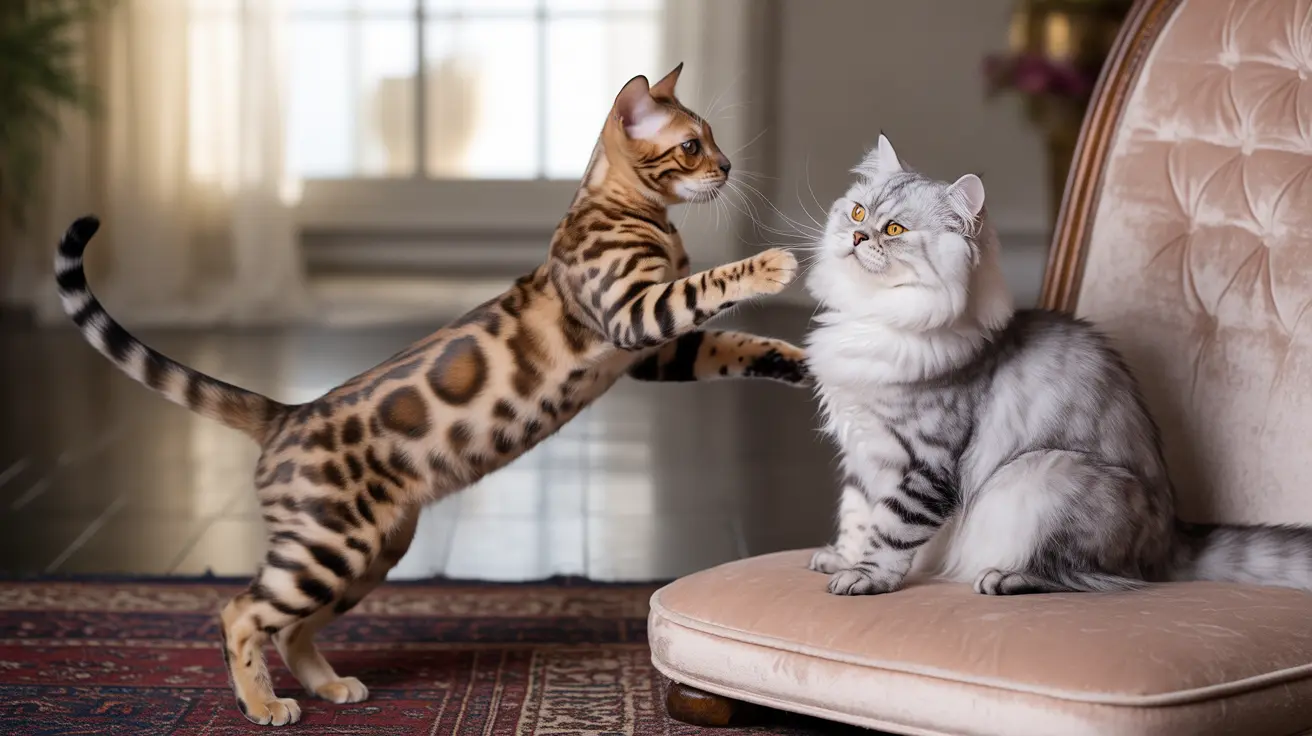For cat owners managing multiple unneutered pets, understanding feline mating behavior is crucial. While male cats may show persistent interest in females throughout the year, the biology of cat reproduction is more complex than simple attraction. Let's explore whether male cats will attempt to mate with females who aren't in heat and what this means for pet owners.
Understanding Feline Sexual Maturity and Heat Cycles
Male cats reach sexual maturity between 4-6 months of age, developing the ability and drive to mate. Female cats also mature around this time, but unlike males, they experience recurring heat cycles that typically last 4-7 days every 2-3 weeks during breeding season.
These heat cycles, known as estrus, are the only times when females are physically and hormonally prepared for successful mating. Outside of these periods, females lack the necessary hormonal conditions for conception.
Male Cat Mating Behavior and Instincts
Male cats are driven by powerful instincts and can detect females in heat from considerable distances thanks to their highly developed sense of smell. They may display persistent courting behaviors year-round, including:
- Increased vocalization
- Territory marking through spraying
- Attempts to escape outdoors
- Following or mounting female cats
- Increased aggression toward other males
Can Successful Mating Occur Outside of Heat?
While male cats might attempt to mount females regardless of their reproductive status, successful mating is virtually impossible when the female isn't in heat. Females not in estrus typically respond to male advances with aggression or strong resistance, making forced mating extremely rare.
Additionally, female cats require specific hormonal conditions present only during heat for ovulation to occur. Without these conditions, pregnancy cannot result even if mounting behavior takes place.
Risks and Management in Multi-Cat Households
Keeping unneutered male and female cats together can lead to several challenges:
- Stress and anxiety for both cats
- Potential for injury during unwanted mounting attempts
- Territorial marking and spraying
- Aggressive behavior
- Risk of pregnancy when females do enter heat
Prevention and Responsible Pet Ownership
The most effective way to manage feline mating behavior is through spaying and neutering. This approach offers multiple benefits:
- Eliminates unwanted pregnancies
- Reduces territorial marking
- Decreases aggressive behavior
- Lowers risk of certain cancers
- Contributes to controlling pet overpopulation
Frequently Asked Questions
Will a male cat try to mate with a female cat if she is not in heat?
Male cats may attempt mounting behavior, but successful mating is extremely unlikely as females not in heat will typically reject advances aggressively.
How can I tell if my female cat is in heat and receptive to mating?
Signs include excessive vocalization, restlessness, rolling on the floor, raising the hindquarters, and marking territory. Cats in heat may also become more affectionate and try to escape outdoors.
Can male cats successfully mate outside of the female's heat cycle?
No, successful mating requires the female to be in heat. The necessary hormonal conditions for ovulation and conception only exist during estrus.
What behaviors indicate that a male cat is interested in a female who is not in heat?
Male cats may follow the female, attempt mounting, vocalize more frequently, or mark territory with urine, even if the female isn't receptive.
How can I prevent unwanted mating and pregnancies in multi-cat households?
The most effective prevention is spaying and neutering. If this isn't immediately possible, keep unneutered males and females separated, especially when females are approaching heat cycles.
Managing feline reproductive behavior requires understanding, patience, and responsible pet ownership. While male cats may show interest in females year-round, nature has designed specific biological conditions necessary for successful mating. The best approach for most pet owners is to spay and neuter their cats, preventing unwanted pregnancies while promoting healthier, happier pets.






